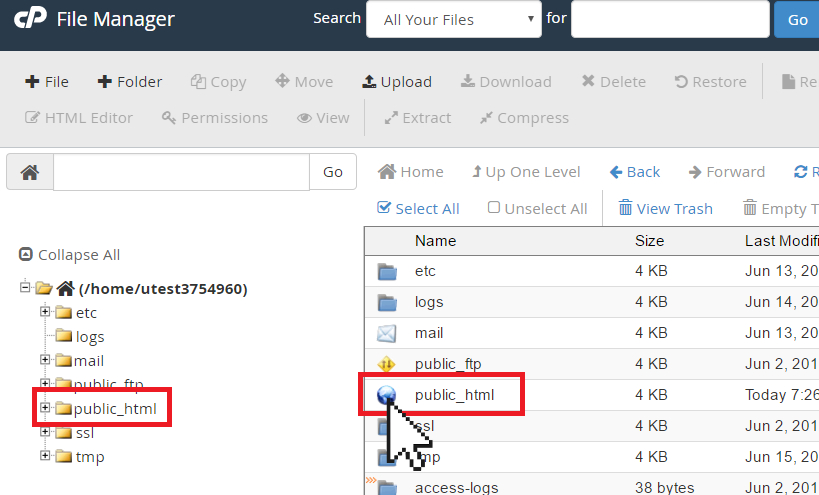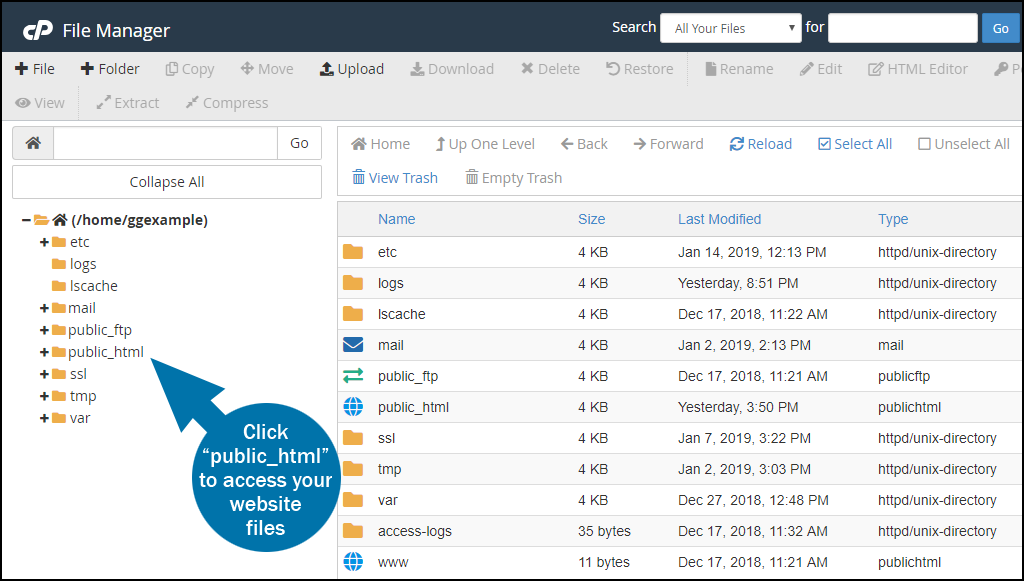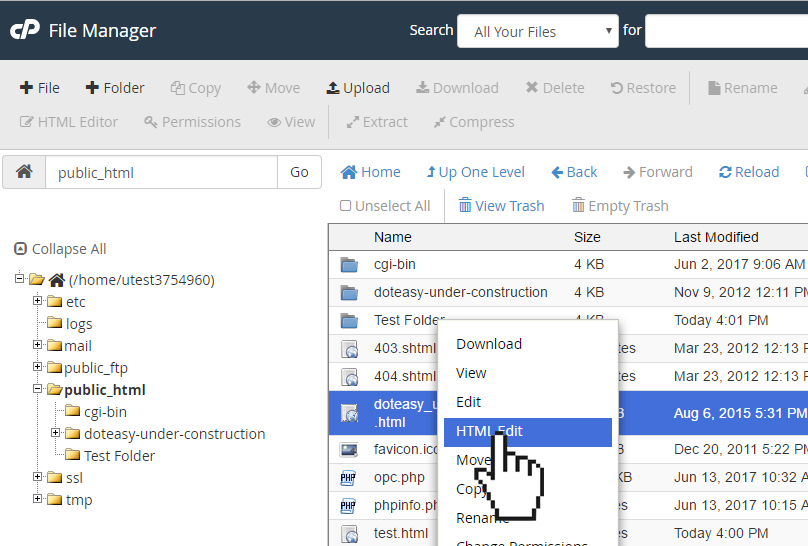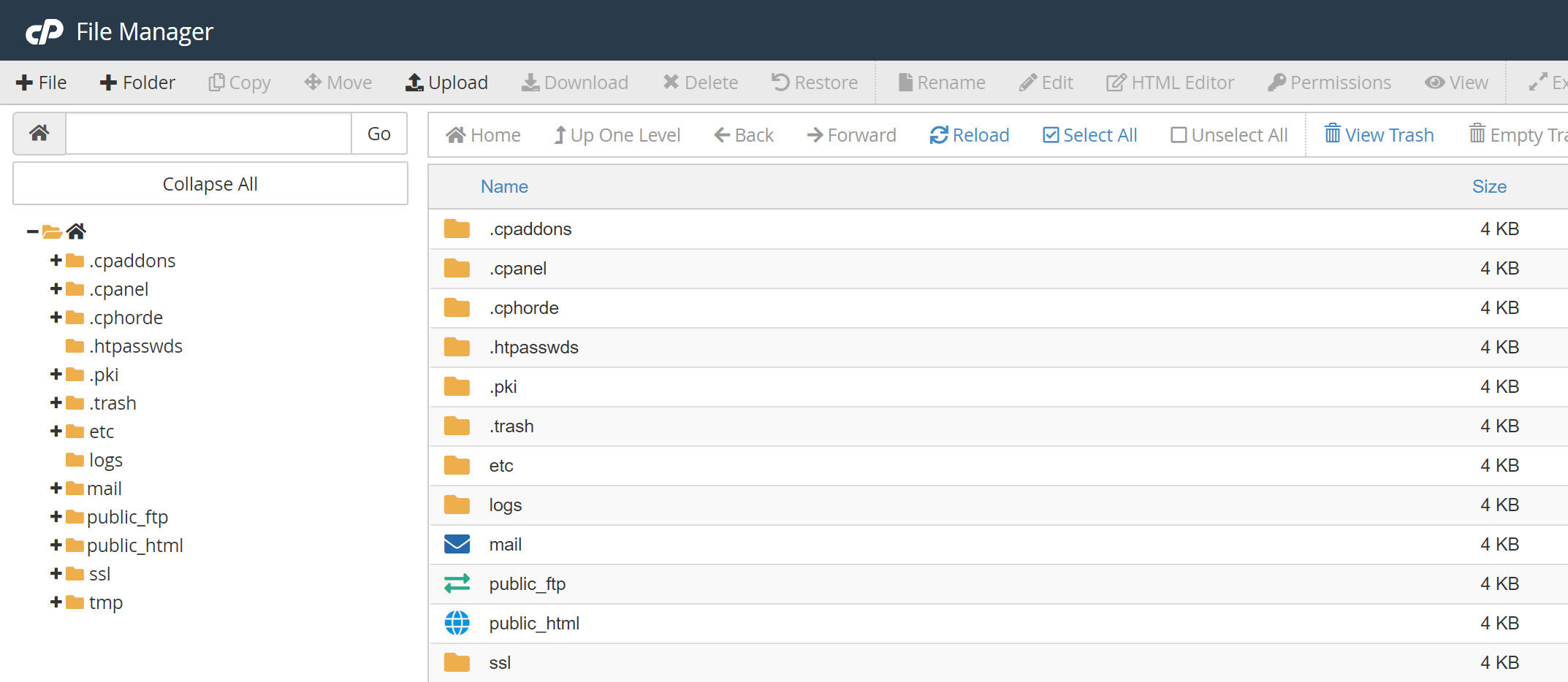

Extract/Compress – With compress, you can archive chosen content to a Zip, Gzip, or Bzip2 format.View – Use this to view a file, for example, to open a picture or view the content of the index.php file.We recommend you don’t change anything unless you completely understand what you’re doing, as changing the wrong permission can cause your website problems. Permissions – You need this feature to assign permission to a specific file or folder.Though it uses a WYSIWYG interface, it’s not quite powerful as other HTML editor softw are. They work pretty similarly like any text editor software and can be quite a help for editing on the go. Rename/Edit/HTML Editor – You’ll need these features to edit your files.You can restore a removed file to its folder origin. Restore – This feature is only available when you’re in the Trash folder.If you want to remove the file permanently, check the Skip the trash and permanently delete the files box. Delete – this option moves the selected file to the Trash folder.Download – this feature will download the selected files to your computer.Once you finished, click the Go Back to link. You have two options to upload the file, either directly drag and drop it or select the file from your computer manually.

To upload folder or larger file, you can use an FTP client like FileZilla.

The only difference is that the file will be removed from its original location. Move – This feature works exactly like Copy.We’re going to copy the index.php that we’ve created to the test-folder. Copy– you can copy the selected file to a specific destination.

Here, we’ll create one named test-folder. Folder – this feature lets you create a new folder.Here we’ll create an index.php file in the public_html folder. File – you can create a new file inside a selected folder by using this feature.


 0 kommentar(er)
0 kommentar(er)
